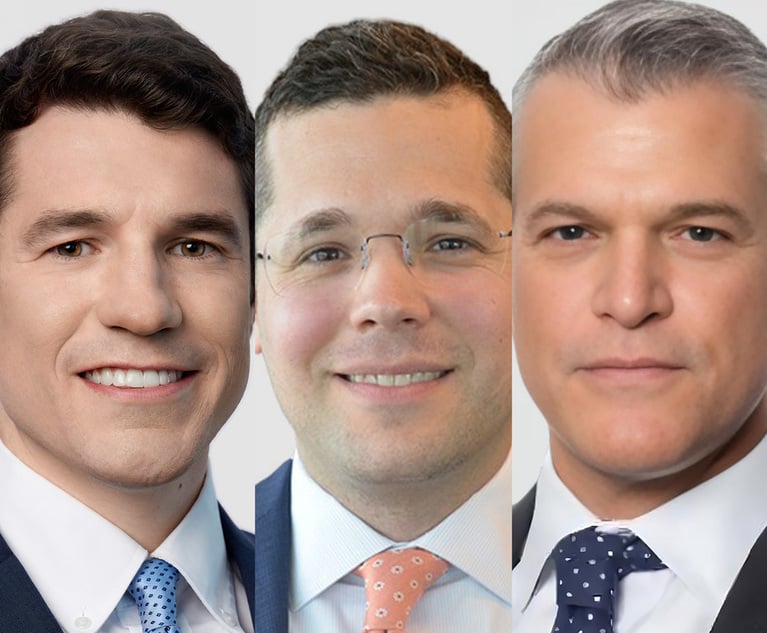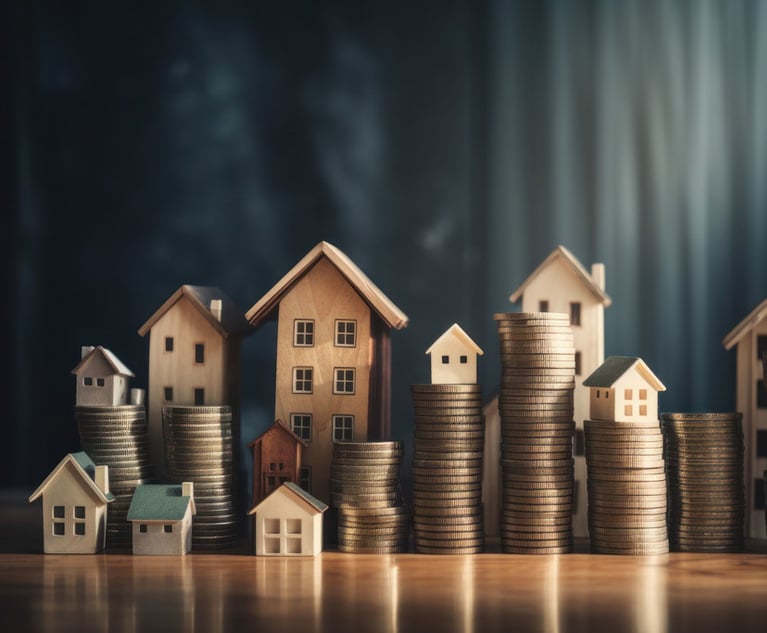This US Mall is Only For the Rich, and It's Doing Just Fine
At the northern tip of Miami Beach's famed barrier island, atop what was once a tangle of mangrove-filled swamps, sits a three-story, 466,000-square-foot…
February 08, 2018 at 02:23 PM
6 minute read

At the northern tip of Miami Beach's famed barrier island, atop what was once a tangle of mangrove-filled swamps, sits a three-story, 466,000-square-foot sanctum for the super-rich. A pair of models dressed in beige linen outfits strut silently past onlookers like a wandering catwalk ad. Outside, shoppers shell out $30 for valet parking and the right to show off their supercars near the main entryway.
Bal Harbour Shops looks like a posh resort compared with the 1,100 or so indoor malls sprinkled throughout America's suburbs. Instead of the glare of fluorescent lights and fake plants, the main drag here is lined with tropical greenery and ponds with turtles and koi. It's different from your run-of-the-mill mall in other ways, too: This one isn't constantly cutting deals on rent to get stores to stay. In fact, there's a waitlist. And while some malls are desperately seeking financial lifelines, this one is planning a $400 million expansion.
On this day, Matthew Whitman Lazenby, the Bal Harbour Shops' developer, is biting into a veggie club sandwich at the mall's second-floor grill. The view is expensive: Range Rovers and Porsches sit outside amid the palm trees. Lazenby, 40, has just returned from a business trip to South America, where he visited several malls, including one in Sao Paolo that's a virtual duplicate of his. The grandson of the mall's late founder, Stanley Whitman, Lazenby says he's fully cognizant of the industry's troubles—and how they don't really affect Bal Harbour.
“There's not many luxury stores you go into and say, 'Ugh, this is terrible,'” he says. “There are some, though. Not here.”
Malls across America are dealing with what's been called the “retail apocalypse:” the looming death of an industry unable to cope with the shifting shopping habits of consumers. U.S. e-commerce sales are expected to account for 17 percent of all retail by 2022, up from 12.7 percent in 2017, with Amazon.com Inc. the main driver, according to Forrester Research.
Even worse for the American mall, Credit Suisse has predicted that from 20 percent to 25 percent of the complexes will shut their doors within the next five years. It's the kind of cultural cataclysm so total that suburban explorers now trek through dead malls with their cameras, chronicling decay as if they were ancient ruins.
Though it's not enough for a mall to simply be near rich folks, it sure does help, says Michael Brown, a partner in the retail practice of consulting firm A.T. Kearney. “Those malls in the densely populated, high-income sectors are continuing to thrive,” he says. Bal Harbour is certainly among them.
One downside for luxury malls located among the well-to-do, however, is that they constantly need to update their offerings to appease all those discerning buyers searching for the hottest brands.
There is no Sears-to-Chanel story for the mall in Bal Harbour. It sought to be ostentatious from the start. When Stanley Finch Whitman opened the doors in 1965, he hoped to attract the poshest stores. Most European luxury brands had yet to invade the U.S., which left New York as the nation's sole home for the glitziest names. Early shops and boutiques at Bal Harbour included FAO Schwartz and a Martha Phillips dress salon, but Whitman was unable to lure a major anchor for years. Then, in 1971, Neiman Marcus agreed to open its first department store outside its home state of Texas. New York's Saks Fifth Avenue soon followed.
Lazenby joined his family's company in 2003 and took over as chief executive in 2013. He's more expansion-minded than his predecessors, investing in a second mall property downtown rather than staying put in Bal Harbour, as his grandfather did.
Malls for the rich aren't immune to e-commerce, Lazenby acknowledges—they just have more time than normal malls before the online monster hits. Much of luxury hasn't shifted there yet. Nevertheless, elite labels that once spurned e-commerce are now moving some business online. Internet retailers such as Net-A-Porter and Farfetch have proven that there is an appetite for high-end online shopping.
There are luxury brands that still shun the internet, but Lazenby warns they should pursue both sides of the business. “One shouldn't be at the expense of the other,” he says.
Goyard currently rank as three of the most productive stores at Bal Harbour, the mall says.
As successful as Bal Harbour is, Lazenby isn't sitting still. In 2015, demolition crews descended on a 70-year-old Congregational church behind the mall's parking garage. “Worship this Sunday,” the sign for the Church by the Sea still read as a Caterpillar excavator ripped down its walls. Bal Harbour Shops had purchased the land for $30 million after a decades-long negotiation begun by Lazenby's grandfather, who died last year. The deal sparked an uproar in the community.
“It's crazy that they would go ahead at Christmas time—a religious time of year—and start demolishing a historic church,” one local resident told the Miami Herald. “What a Christmas gift for the residents of Bal Harbour and the congregants.”
Lazenby was unmoved. “Activist naysayers,” he called his detractors.
The new wing of Bal Harbour Shops that will take the church's place is expected to open in 2023. The mall recently announced that a three-floor, 53,000-square-foot Barneys New York would be its new anchor shop.
On a recent sun-soaked afternoon, Lazenby is about to head back to his corporate office across from the mall. Shoppers who just finished lunch look into a window or two on their way out. A man in a T-shirt and basketball shorts exits Le Zoo, a restaurant where a cheeseburger costs $18. His friend asks him what stores are inside Bal Harbour. “Pretty much anything bougie,” he replies, as they stroll toward the shops.
They're back just a few minutes later, toting a Versace shopping bag, and hop into a yellow, half-million-dollar Lamborghini parked right in front. The driver revs the engine repeatedly as they roll away, leaving nearby diners annoyed.
“Who was that?” a mall worker asks as the valet returns to his post.
The valet shrugs. “Somebody's son.”
Kim Bhasin reports for Bloomberg News.
Copyright 2018 Bloomberg. All rights reserved. This material may not be published, broadcast, rewritten, or redistributed.
This content has been archived. It is available through our partners, LexisNexis® and Bloomberg Law.
To view this content, please continue to their sites.
Not a Lexis Subscriber?
Subscribe Now
Not a Bloomberg Law Subscriber?
Subscribe Now
NOT FOR REPRINT
© 2025 ALM Global, LLC, All Rights Reserved. Request academic re-use from www.copyright.com. All other uses, submit a request to [email protected]. For more information visit Asset & Logo Licensing.
You Might Like
View All


Applying Neuroscience to Real Estate Development to Address Our Growing Need for Improved Well-Being
10 minute readTrending Stories
- 1'Merciless' Filing Deadline Dooms Cuban Americans' Property-Trafficking Suit Against BNP Paribas, SocGen
- 2In 2-1 Ruling, Court Clears Way for Decade-Old Wrongful Imprisonment Suit
- 3Trump Sentencing, TikTok Ban Welcome Justices Back to Work
- 4U.S. Eleventh Circuit Remands Helms-Burton Trafficking Case Involving Confiscated Cuban Port
- 5Can Passive Technology Change the Impaired Driving Trajectory?
Who Got The Work
Michael G. Bongiorno, Andrew Scott Dulberg and Elizabeth E. Driscoll from Wilmer Cutler Pickering Hale and Dorr have stepped in to represent Symbotic Inc., an A.I.-enabled technology platform that focuses on increasing supply chain efficiency, and other defendants in a pending shareholder derivative lawsuit. The case, filed Oct. 2 in Massachusetts District Court by the Brown Law Firm on behalf of Stephen Austen, accuses certain officers and directors of misleading investors in regard to Symbotic's potential for margin growth by failing to disclose that the company was not equipped to timely deploy its systems or manage expenses through project delays. The case, assigned to U.S. District Judge Nathaniel M. Gorton, is 1:24-cv-12522, Austen v. Cohen et al.
Who Got The Work
Edmund Polubinski and Marie Killmond of Davis Polk & Wardwell have entered appearances for data platform software development company MongoDB and other defendants in a pending shareholder derivative lawsuit. The action, filed Oct. 7 in New York Southern District Court by the Brown Law Firm, accuses the company's directors and/or officers of falsely expressing confidence in the company’s restructuring of its sales incentive plan and downplaying the severity of decreases in its upfront commitments. The case is 1:24-cv-07594, Roy v. Ittycheria et al.
Who Got The Work
Amy O. Bruchs and Kurt F. Ellison of Michael Best & Friedrich have entered appearances for Epic Systems Corp. in a pending employment discrimination lawsuit. The suit was filed Sept. 7 in Wisconsin Western District Court by Levine Eisberner LLC and Siri & Glimstad on behalf of a project manager who claims that he was wrongfully terminated after applying for a religious exemption to the defendant's COVID-19 vaccine mandate. The case, assigned to U.S. Magistrate Judge Anita Marie Boor, is 3:24-cv-00630, Secker, Nathan v. Epic Systems Corporation.
Who Got The Work
David X. Sullivan, Thomas J. Finn and Gregory A. Hall from McCarter & English have entered appearances for Sunrun Installation Services in a pending civil rights lawsuit. The complaint was filed Sept. 4 in Connecticut District Court by attorney Robert M. Berke on behalf of former employee George Edward Steins, who was arrested and charged with employing an unregistered home improvement salesperson. The complaint alleges that had Sunrun informed the Connecticut Department of Consumer Protection that the plaintiff's employment had ended in 2017 and that he no longer held Sunrun's home improvement contractor license, he would not have been hit with charges, which were dismissed in May 2024. The case, assigned to U.S. District Judge Jeffrey A. Meyer, is 3:24-cv-01423, Steins v. Sunrun, Inc. et al.
Who Got The Work
Greenberg Traurig shareholder Joshua L. Raskin has entered an appearance for boohoo.com UK Ltd. in a pending patent infringement lawsuit. The suit, filed Sept. 3 in Texas Eastern District Court by Rozier Hardt McDonough on behalf of Alto Dynamics, asserts five patents related to an online shopping platform. The case, assigned to U.S. District Judge Rodney Gilstrap, is 2:24-cv-00719, Alto Dynamics, LLC v. boohoo.com UK Limited.
Featured Firms
Law Offices of Gary Martin Hays & Associates, P.C.
(470) 294-1674
Law Offices of Mark E. Salomone
(857) 444-6468
Smith & Hassler
(713) 739-1250







